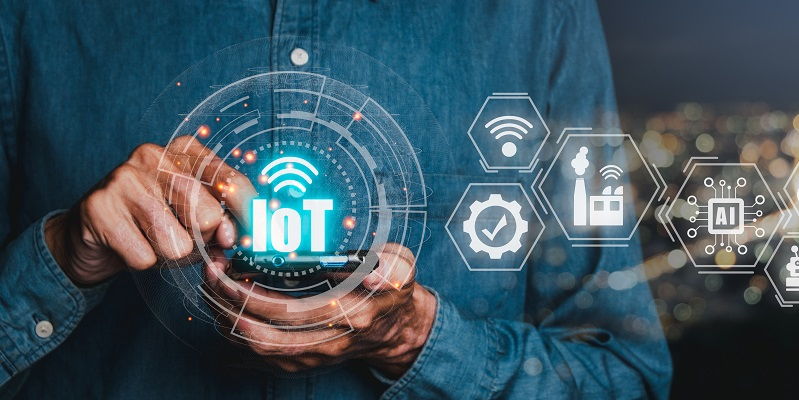The rapid proliferation of smart devices and the Internet of Things (IoT) has transformed the way we live, work, and interact with the world around us. However, despite the convenience and potential benefits of IoT, a recent study conducted in collaboration with YouGov reveals significant challenges in building consumer trust and ensuring the security of these devices. This article explores the key findings from the study, highlighting consumer attitudes, understanding, and the need for improved communication and security measures in the IoT industry.
Consumer Perception of Security
In a surprising revelation, the study found that only 14% of consumers view smart devices as secure. This stands in stark contrast to the fact that 38% of respondents reported using such devices in their daily lives. This disconnect between usage and perception of security raises concerns about the effectiveness of current security measures in the IoT industry. It is evident that more needs to be done to address and alleviate these security concerns to build trust among consumers.
Optimism about Convenience
Despite the perceived security challenges, 41% of respondents express optimism about the convenience that IoT can bring to their daily lives. This optimism stems from the potential benefits of connectivity in various aspects of daily routines, such as home automation, healthcare monitoring, and transportation. The ability to control and manage devices remotely, automate mundane tasks, and receive personalized services are some of the conveniences that consumers are excited about. This optimistic outlook offers opportunities for the IoT industry to leverage consumer enthusiasm and deliver on the promises of connectivity.
Lack of Understanding
The study also sheds light on the lack of understanding among consumers regarding the concept of the Internet of Things. Only 24% of respondents felt confident in defining the term, indicating a need for improved education and awareness initiatives on IoT. Remarkably, regional differences were observed, with Singapore leading with 33% of respondents who could define IoT, while the UK trailed with the lowest percentage at only 20%. Bridging this knowledge gap is crucial for consumers to make informed decisions and engage meaningfully with IoT technologies.
Communication Strategies
To address these challenges, the report advocates for improved communication strategies targeting the general public. It emphasizes the importance of clear and accessible information about IoT, including its benefits, potential risks, and security measures implemented to protect user data. Effective communication initiatives that simplify complex concepts, engage consumers through various channels, and establish trust need to be prioritized. Examples of successful initiatives can serve as models for future communication strategies.
Securing IoT Infrastructure
As the IoT ecosystem expands, ensuring the security of digital infrastructure becomes paramount. The report underlines the need to secure IoT and smart city infrastructure with the latest generation of digital security solutions. By deploying robust encryption methods, implementing strict access controls, and regularly updating devices with security patches, the risks associated with IoT can be minimized. Real-life success stories of secure IoT deployments and the measures implemented to protect data can inspire other stakeholders in the industry to prioritize security.
Regional Differences in Attitudes
Interestingly, the study reveals substantial discrepancies in attitudes toward IoT and smart city technology across different countries. While some regions embrace IoT enthusiastically, others remain skeptical or cautious. For instance, Singapore has emerged as a leader, with a higher percentage (33%) of respondents who can define IoT. In contrast, the UK lags behind with only 20%. Cultural factors, regulatory environments, and experiences with technology influence these varying attitudes. A nuanced understanding of these regional differences can help stakeholders tailor their strategies to effectively engage consumers in each market.
Building Trust and Reassurance
The prevailing lack of trust identified in the study highlights the urgent need for increased security measures and comprehensive communication strategies in the IoT industry. Establishing trust requires transparency, reliability, and accountability. Consumers need assurance that their data is secure, and that any vulnerabilities or breaches will be promptly addressed. By actively involving consumers in the development and testing processes, providing clear privacy policies, and demonstrating an ongoing commitment to security, stakeholders can build greater trust and confidence among their user base.
Research Methodology
The report was compiled in collaboration with YouGov between April 3rd and April 7th, 2023. A diverse sample size was included in the study, capturing consumer perspectives from different countries, demographic backgrounds, and levels of IoT usage. The research methodology employed a combination of surveys, interviews, and focus groups to gather comprehensive insights into consumer sentiment, knowledge, and concerns regarding IoT and smart city technology.
The study’s findings highlight the critical challenges facing the IoT industry in terms of consumer trust and security. The disconnect between consumer usage and perception of security, coupled with the lack of understanding and regional differences, necessitate immediate action. To build trust and reassurance, stakeholders must prioritize transparent communication, robust security measures, and region-specific strategies. Only through collaborative efforts and comprehensive solutions can the IoT industry gain consumer confidence and fully unlock the potential of a connected world.

